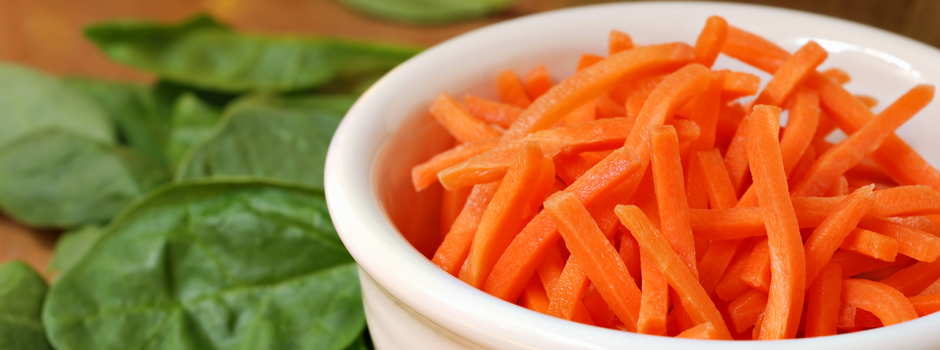Generations of teenie boppers have been told that eating chocolate causes breakouts, and greasy foods like pizza results in "pizza face." Acne — that oh-so loveable inflammatory skin condition that gives us clogged pores, blackheads, and pimples — is never fun. We’re stepping in to investigate if what we eat really leads to bad skin — and how we can help fight that prepubescent nightmare.
WHAT MAKES ACNE WORSE
Some foods can aggravate acne, but the main offenders are high in carbs or excessively greasy. Here’s the breakdown of why a loaf of white bread or a basket of wings could lead to a zit disaster.
High Glycemic Index Foods The Glycemic Index is a ranking of carbs (from 0 to 100) based on how much they raise blood sugar levels when we eat them. Foods with values below 55 are considered "low-GI," while those above 70 are considered "high-GI". High GI foods (like doughnuts, white bread, or pretzels) spike blood sugar levels because the body digests them very quickly. This can increase acne flare-ups because spiked insulin levels increase the body’s inflammatory reactions, which — surprise, surprise — can mean acne inflammations,
Greasy Foods While eating certain foods can affect our skin from the inside out, greasy food causes problems from the second it touches our lips. French fries and a cheddar-smothered burger can create acne when the grease from that delicious meal touches our skin, causing pimples.
Refined Sugars, Dairy, Chocolate, Fast Food While some people may get acne flare-ups from eating dairy, refined sugars, and even chocolate, there’s not a whole lot of evidence to prove they definitely lead to a face full of pimples . Dairy is still on the radar because milk and whey protein-based products up levels of insulin. Fast food, because of high sugar levels and fat content, could likely contribute to less-than-perfect skin, but there’s not a lot of research to prove its link to acne . And then there’s chocolate, which has been associated with acne for decades… but only one controlled study claims that chocolate causes acne due to its dairy and carb content.
Now that we know what foods we should steer clear of, what foods should we eat for clear skin?
WHAT (MIGHT) MAKE IT BETTER
You don’t have to be a brainiac to know that protein- and veggie-packed diets are good for us. But there some diets that can help maintain clear skin. Studies have found that the Mediterranean diet— mostly fruits, vegetables, whole grains, fish, beans, nuts, and olive oil — can protect against acne.
But if sticking to a set diet with a fancy name sounds daunting, we looked into what specific foods we should eat to zap zits, and why.
Vitamin A Foods like carrots and spinach are a good source of vitamin A, which prevents the overproduction of cells in the skin’s outer layer (read: there are fewer dead cells hanging around to clog pores). Not a fan of spinach or carrots? Try other vitamin A stars like pumpkin, sweet potatoes, dark leafy greens, and cantaloupe.
Omega-3 Fatty Acids Foods rich in omega-3 fatty acids, like salmon, walnuts, and flax seed may help keep inflammation under control (which can show through as red, painful bumps on our skin).
Vitamin E Foods containing lots of vitamin E, like pine nuts and sunflower seeds, play an important role in preventing acne development. Many studies have found that levels of vitamin E were significantly lower in patients with acne. Plus, the vitamin can help heal acne-scarred skin.
Zinc deficiency is associated with a variety of skin problems, including acne. Kicking back oysters and munching on dark chocolate can provide a healthy dose of zinc.
Vitamin B5 (and other B vitamins) promotes, among other things, healthy skin and hair. In one small study, a large dose of vitamin B5 supplements cured cases of acne. Why, you ask? Vitamin B5 has been shown to decrease oil production on skin and reduces the size of pores.
Selenium Whole grains (like quinoa and brown rice) and aromatic vegetables (like onion and garlic) are rich in selenium, which helps preserve skin’s elasticity. But that’s not all — selenium can also reduce inflammatory damage to the skin. A small study found that taking selenium supplements improved the skin of patients with severe acne.
Water and High Fiber Foods Guzzling H2O and consuming high fiber foods like fruits, beans, and vegetables, can help the body flush out toxins, which can lead to inflammation and clogged pores. Constipation has also been linked to skin conditions like acne. A high fiber diet with adequate hydration will help keep things moving smoothly.
How have you found diet affects your skin? Tell us in the comment section below or tweet @WellnessUtah







No comments:
Post a Comment